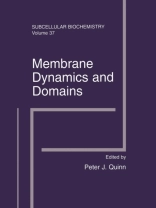The fluid-mosaic model of membrane structure formulated by Singer and Nicolson in the early 1970s has proven to be a durable concept in terms of the principles governing the organization of the constituent lipids and proteins. During the past 30 or so years a great deal of information has accumulated on the composition of various cell membranes and how this is related to the dif- ferent functions that membranes perform. Nevertheless, the task of explaining particular functions at the molecular level has been hampered by lack of struc- tural detail at the atomic level. The reason for this is primarily the difficulty of crystallizing membrane proteins which require strategies that differ from those used to crystallize soluble proteins. The unique exception is bacteriorhodopsin of the purple membrane of Halobacterium halobium which is interpolated into a membrane that is neither fluid nor in a mosaic configuration. To date only 50 or so membrane proteins have been characterised to atomic resolution by diffraction methods, in contrast to the vast data accumulated on soluble proteins. Another factor that has been difficult to explain is the reason why the lipid compliment of membranes is often extremely complex. Many hundreds of different molecular species of lipid can be identified in some membranes. Remarkably, the particular composition of each membrane appears to be main- tained within relatively narrow limits and its identity distinguished from other morphologically-distinct membranes.
Peter J. Quinn
Membrane Dynamics and Domains [PDF ebook]
Subcellular Biochemistry
Membrane Dynamics and Domains [PDF ebook]
Subcellular Biochemistry
Acquista questo ebook e ricevine 1 in più GRATIS!
Lingua Inglese ● Formato PDF ● ISBN 9781475758061 ● Editore Peter J. Quinn ● Casa editrice Springer US ● Pubblicato 2013 ● Scaricabile 3 volte ● Moneta EUR ● ID 4701903 ● Protezione dalla copia Adobe DRM
Richiede un lettore di ebook compatibile con DRM












